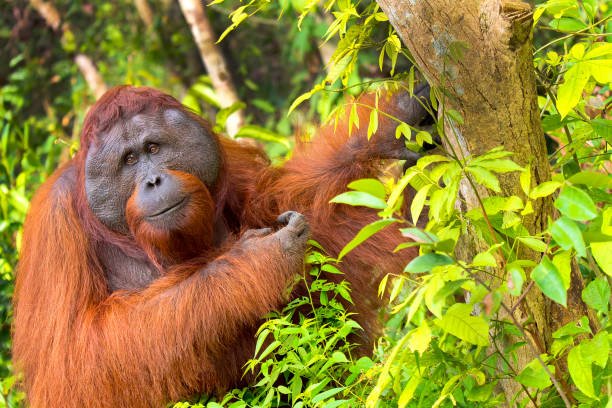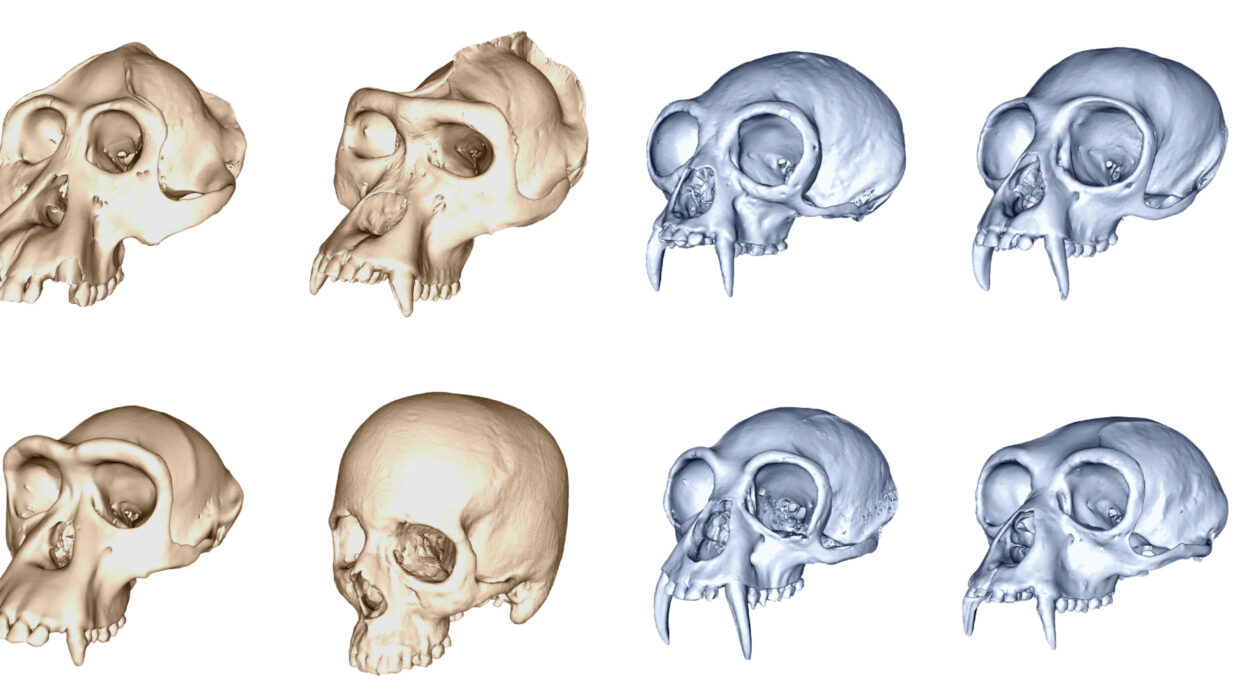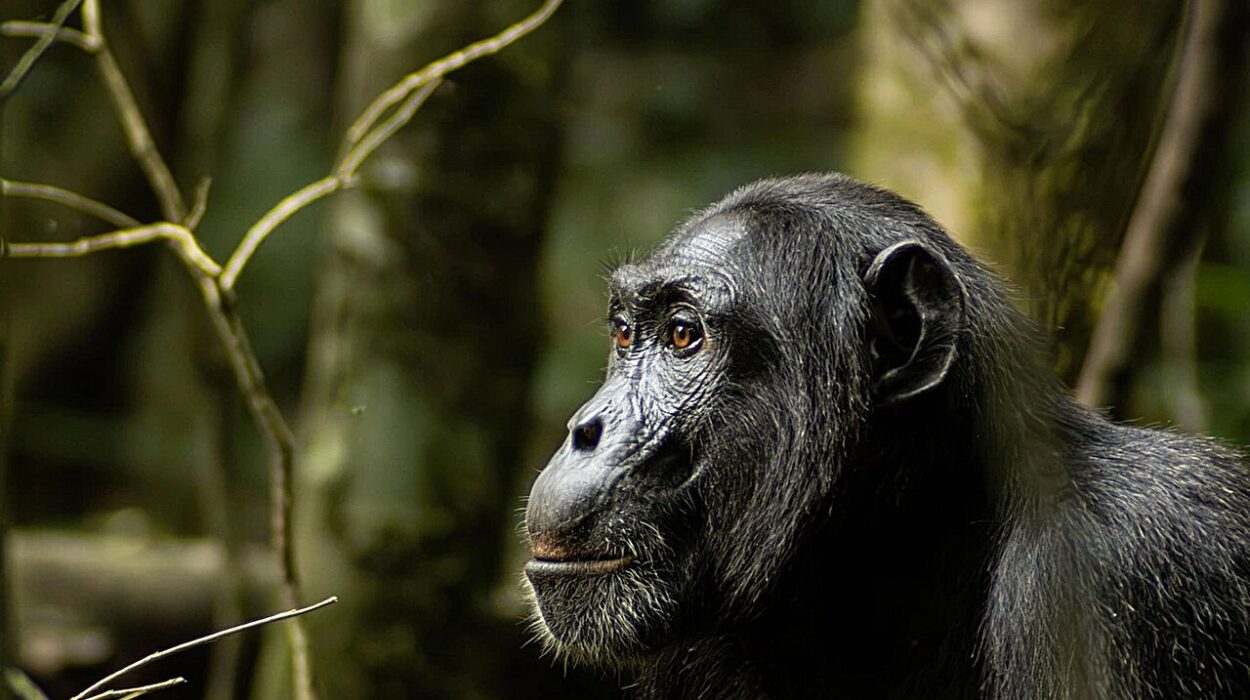Somewhere deep in the Sumatran rainforest, a rustle in the undergrowth sends a female orangutan scrambling up a tree. She halts, peering down with sharp eyes, and then—she calls out. The sound that escapes her lips is no random screech. It pulses in nested rhythms, echoing in patterns that, if translated, might say: “There’s something below. It might be dangerous. Be alert, but maybe not alarmed.”
To the untrained ear, it’s just noise in the jungle. But to scientists listening closely, those vocalizations carry a secret—a clue that may rewrite one of the fundamental stories we tell about ourselves: that the recursive structure of human language is unique.
A groundbreaking study from the University of Warwick, published in the Annals of the New York Academy of Sciences, suggests that wild orangutans communicate using a form of recursion—a linguistic feature long believed to be the exclusive domain of humans. The implications are staggering: not only does this suggest a much earlier evolutionary origin for our linguistic prowess, but it also calls into question the rigid line we’ve drawn between human language and animal communication.
What Recursion Really Means—and Why It Matters
To understand what’s so extraordinary about orangutan vocalization, we first need to understand recursion. Linguistically, recursion is the ability to embed elements within other elements, forming layers of meaning that build upon each other. It’s the reason a child can say, “The dog barked,” but also, “The dog that chased the cat that killed the rat that ate the cheese barked.” Each embedded clause adds complexity and information.
Think of it like Russian nesting dolls—structures within structures. With recursion, language becomes a tool not just for naming things, but for building ideas, sharing relationships, predicting outcomes, imagining futures, and conveying richly layered meaning.
Most linguists have long considered this feature to be the crown jewel of human language—an exclusive evolutionary leap that set us apart from the rest of the animal kingdom. Until now.
Orangutans’ Jungle Symphony: A Hidden Structure Emerges
Enter Dr. Chiara De Gregorio and her colleagues, Dr. Adriano Lameira at the University of Warwick and Dr. Marco Gamba at the University of Torino. Their study focused on the vocal behavior of wild female Sumatran orangutans in their natural environment—a chaotic and predator-laced jungle that constantly demands rapid decision-making and communication.
By analyzing alarm calls in response to various threats, the researchers began to notice something strange. The orangutans weren’t just making random calls; their vocalizations had structure. More than that, the calls revealed a three-layered recursive rhythm, where sounds were grouped within groups, each level maintaining a consistent internal rhythm, much like musical phrases nested within a symphony.
At the first level, orangutans produced short, individual sound units—basic calls like syllables. These were then organized into combinations, creating sequences (the second level). But the real surprise came at the third level: those sequences were themselves arranged into extended bouts with their own rhythmic patterns.
A single alarm sequence, in effect, mirrored the layered complexity of a sentence: syllables forming words, words forming phrases, phrases forming sentences. “This is the first time such a recursive, self-embedded structure has been documented in great ape communication,” says Dr. De Gregorio. “It challenges the belief that only humans can layer communication in this way.”
Not Just Noise: The Rhythmic Language of Alarm
Skeptics might argue that animal calls often come in bursts—birds chirp in flurries, wolves howl in series, dolphins click rhythmically. But what makes the orangutan’s system exceptional is that it’s not just structured—it’s flexible and informationally rich. Their rhythm changes with context, a key sign of intentional communication.
When presented with a real predator—like a model of a tiger—the orangutans’ calls became sharper, faster, and more regular, reflecting urgency and danger. But when faced with a mere visual trick, like a camouflaged fabric made to resemble a threat, their rhythm slackened. The calls slowed, and the pattern became less consistent, almost hesitant.
This modulation of vocal rhythm in direct response to perceived threat level suggests that orangutans are not just reacting—they’re encoding and conveying graded meanings. They’re not simply screaming; they’re saying, “This might be dangerous, but I’m not sure.”
In human terms, it’s the difference between shouting, “Fire!” and calmly stating, “I smell smoke, but I don’t see flames.”
The Evolutionary Echo: A Shared Linguistic Past?
For decades, the search for the roots of language has looked for sudden bursts of brilliance—a “language gene,” or a unique mutation that catapulted Homo sapiens into the linguistic stratosphere. But findings like this offer a different narrative: one of slow, steady accumulation. A story not of abrupt invention, but of ancient inheritance.
“Our results suggest that recursion didn’t appear suddenly in humans,” De Gregorio notes. “Instead, it may have evolved incrementally, rooted in communication systems present in our last common ancestor with orangutans.”
That ancestor lived some 12 to 16 million years ago—meaning the seeds of recursive structure could be much older than previously believed. Rather than a unique gift of Homo sapiens, the capacity for layered communication might have been present, in some form, in the great apes long before us.
And if orangutans, who are generally less vocal than chimps or bonobos, exhibit this level of recursive complexity, then what else might we be missing in other species? How many animal languages have gone unrecognized because we weren’t listening with the right tools?
Beyond the Words: What Orangutans Tell Us About Ourselves
This research doesn’t just alter our understanding of orangutans—it shifts the lens through which we view ourselves. The boundaries between species, especially in terms of cognition and communication, have always been more porous than we like to admit. Language, long thought to be the final frontier of human exceptionalism, may not be a fortress at all—but a landscape with shared evolutionary trails.
Indeed, the more we study the communication of primates, birds, cetaceans, and even insects, the more we find that complexity is everywhere, often hidden in plain sight. The orangutans’ recursive calls are not just fascinating—they are humbling. They suggest that what we often define as uniquely human may, in fact, be profoundly natural.
An Invitation to Listen Differently
The orangutan’s call is not just an evolutionary relic—it’s a living echo, a reminder that language didn’t begin with syllables carved in stone or Shakespeare’s verse. It began with rhythm. With breath. With the urgent need to tell others: This is important. Pay attention.
In the high canopy of the Sumatran forest, an orangutan vocalizes again, her rhythmic bout carrying across the trees. She’s not just warning her kin—she’s teaching us, too. If we listen carefully, we might hear in her song the ancient scaffolding of our own voices.
This is no mere mimicry. This is recursion. This is communication. This is, perhaps, the earliest music of thought.
Reference: Chiara De Gregorio et al, Third‐order self‐embedded vocal motifs in wild orangutans, and the selective evolution of recursion, Annals of the New York Academy of Sciences (2025). DOI: 10.1111/nyas.15373






